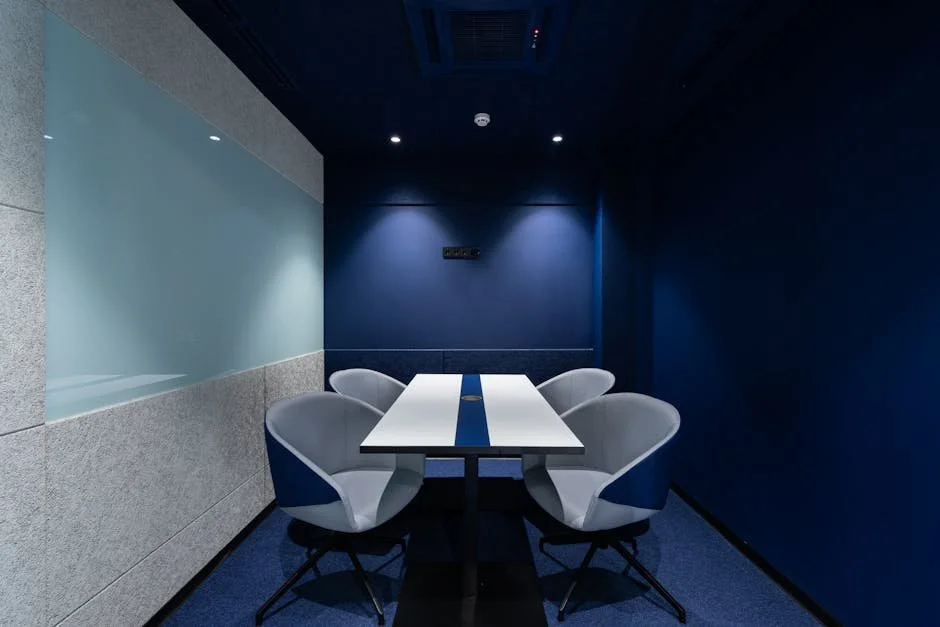The Evolution of Conference Spaces in Modern Workplaces
Historical conference spaces
Historical conference spaces have evolved significantly over time. Initially, meetings were usually conducted in formal settings or designated rooms within establishments such as government offices or hotels. These spaces were often characterized by large tables, chairs, and a podium for speakers. In the early 20th century, conference rooms started to become more commonplace in corporate offices as companies recognized the importance of facilitating discussions and decision-making in a dedicated area. By the mid-20th century, technological advancements like projectors and teleconferencing tools began to be integrated into conference spaces to enhance communication and collaboration.
Importance of conference spaces in modern workplaces
Conference spaces in modern workplaces have become essential for fostering collaboration, creativity, and productivity among employees. These spaces provide a designated area for teams to gather, brainstorm ideas, and communicate effectively. With the rise of remote work, having well-equipped conference spaces is crucial for facilitating virtual meetings and ensuring smooth communication between team members. These spaces help in creating a conducive environment for discussions, decision-making, and problem-solving, ultimately contributing to the overall success of the organization.
Trends in modern conference space design
Companies today are moving towards more flexible and collaborative office environments, and this shift is also influencing the design of conference spaces. Open and multipurpose spaces are becoming increasingly popular, providing versatility for various types of meetings and events. Incorporating technology is a key trend, with features like wireless connectivity, interactive displays, and video conferencing capabilities enhancing the functionality of conference rooms. Biophilic elements such as plants and natural lighting are being integrated to improve employee well-being and productivity. Adjustable furniture that can be easily reconfigured for different purposes is also a common aspect of modern conference space design.
Integration of technology in conference spaces
Technology has radically changed how conference spaces are designed. Modern workplaces now prioritize integrating technology seamlessly into these spaces to enhance communication and collaboration among employees. Some key aspects of this integration include:
Video conferencing equipment to connect remote team members effortlessly
Interactive whiteboards for dynamic presentations and brainstorming sessions
Wireless screen sharing for easy sharing of information during meetings
High-quality audio systems for clear communication
By incorporating these technological advancements, companies can create more efficient and effective conference spaces that cater to the needs of their workforce in this digital age.
Flexible seating arrangements in conference spaces
In modern workplaces, conference spaces are evolving to feature flexible seating arrangements. This means that seating is no longer fixed, allowing for a variety of seating options to accommodate different meeting needs. By incorporating flexible seating arrangements, companies can create a more dynamic and comfortable environment for collaborative discussions and presentations. This approach encourages creativity and engagement among participants, leading to more productive meetings.
Wellness considerations in conference space design
Wellness in conference space design is gaining importance as companies prioritize employee health and comfort. Natural lighting is crucial to create a positive environment and reduce eye strain. Ergonomic furniture encourages good posture and prevents discomfort during long meetings. Plants are incorporated for better air quality and a calming atmosphere. Acoustic solutions, such as sound-absorbing materials, help reduce noise and enhance concentration. Flexible layouts allow for movement and different group sizes, promoting collaboration and creativity.
Sustainability features in modern conference spaces
Modern conference spaces are incorporating sustainable features to reduce their environmental impact. These features include energy-efficient lighting systems, recycled materials for furniture and décor, natural light to reduce the need for artificial lighting, and water-saving fixtures in bathrooms. Some spaces also have green walls for improved air quality and aesthetics. Sustainable conference spaces aim to create a more eco-friendly environment for meetings and events.
Maximizing productivity through conference space design
Well-designed conference spaces can significantly boost productivity in the workplace. A thoughtfully arranged and equipped conference room encourages collaboration, communication, and idea generation among team members. Features such as comfortable seating, ample natural light, appropriate acoustics, and easy access to necessary technology like screens and video conferencing tools can enhance the efficiency and effectiveness of meetings. A well-designed conference space can inspire creativity and foster a positive and engaging atmosphere, leading to more productive and successful outcomes.
Collaborative zones within conference spaces
Collaborative zones within conference spaces encourage teamwork and creativity. These areas are designed for group discussions, brainstorming sessions, and interactive meetings. They often feature movable furniture, writable walls, and technology tools to facilitate collaboration. Flexible seating arrangements and natural lighting can enhance the comfort and productivity of these spaces. Number of outlets and charging ports and overall accessibility are key factors in creating effective collaborative zones within conference spaces.
The future of conference spaces
Look for conference spaces in modern workplaces to become more adaptable and tech-savvy. Companies are likely to invest in smart technologies that enhance collaboration and productivity. Expect a rise in flexible and interactive setups, allowing for seamless transitions between in-person and virtual meetings. To accommodate diverse work styles, conference spaces may offer ergonomic furniture and customizable layouts. Embrace an environment that fosters creativity and efficiency in meetings.

